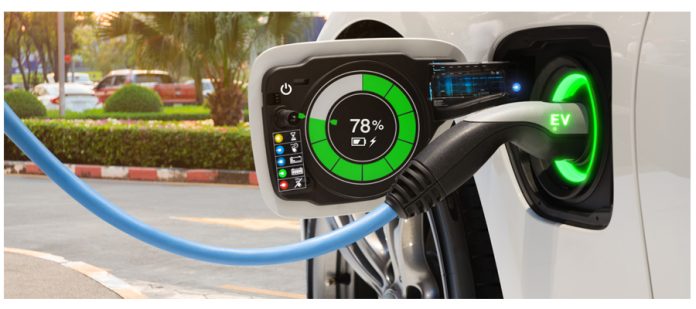The sector has been gaining momentum for some time but despite widespread enthusiasm from countries and citizens as well as the increasing sale of eVehicles, there remains a serious hurdle to mass adoption. It’s not a secret that there is a lack of charging infrastructure that is needed to keep eVehicles powered and moving on our roads.
The rising popularity of eMobility comes with limitations
eMobility sector boasts an incredible ecosystem. This ranges from the electric vehicle supply chain – including components, batteries, etc. – to its wide-ranging OEMs and complex infrastructure – charging, power generation/storage, fleet management etc.
Prompted by climate change targets alongside rising public demand, many governments and associations are increasing efforts. One example is the European Automobile Manufacturers’ Association (ACAE) which released its Masterplan on the infrastructure and investments required to reach the EU’s ‘Fit for 55’ CO2 reduction targets. But is that enough to close the investment gap?
It might be helpful to review some of the actions currently being taken by a few regions.
Europe’s ambitious action to meet climate targets
As I mentioned the EU aims to reduce its greenhouse gas emissions by at least 55% until 2030 (compared to 1990’s levels). So it follows that EU member states are taking ambitious action to meet targets and eMobility is a key part of this.
The French EV Infrastructure Charging Programme ADVENIR aims to finance 45,000+ new charging points by the end of 2023 with a €100 million budget. At the same time, big-name and smaller emerging energy providers are developing models to better serve the growing demand.
With a similarly snappy name, the Spanish electrification programme MOVES is now in its third phase. The current iteration will run until the end of 2023 with a preliminary budget of €400 million. The target is 100,000 charging points and 250,000 electric vehicles by 2023 saving more than 450,000 tonnes of CO2. Dependent on its success this budget has the potential to double in size.
In Germany, the goal is to have 1 million charging stations and 10 million electric vehicles by 2030. The KFW (Kreditanstalt fuer Wiederaufbau) has dedicated €350 million to this for 2022. Given that eVehicles currently make up a mere 1.2% of the 48.2 million passenger cars registered in Germany. It’s likely that many more are required to hit climate neutrality targets.
In order to boost its take-up of eVehicles and reduce emissions, the Polish government offers co-financing to local government units, entrepreneurs, cooperatives and individual farmers for the construction of generally accessible charging stations. Grants can cover up to 25% of eligible costs.
Sweden is perhaps unsurprisingly ahead of the game. Last November eVehicles accounted for more than half of new car sales in the country, and Sweden’s roads boast more than 340,000 eVehicles total. Klimatklivet is one of Sweden’s major policies targeting GHG emissions and has contributed a total of 5.4 billion SEK (0.5 billlion EUR) to more than 3200 different projects. The number of registered public charging stations currently stands at 2,689 and the number of charging points at 14,575, according to the national database Nobil.
And yet, the country lags behind Norway where OFV (Opplysningsrådet for Veitrafikken) reports record-breaking growth, with as many as 86% of newly registered passenger cars in Q1 being pure electric cars. There are currently more than 16,000 charging stations, including 3,300 fast chargers, across Norway. Of course such glowing success here is supported by government initiatives since 1990 (VAT exemption on zero emission vehicles) and in more years the high taxation of petrol and diesel vehicles at a whopping 25%.
The UK’s Road to Zero strategy aims at making transportation carbon-neutral by 2040. This also includes the implementation of 300,000 eCharging stations by 2030.
India’s charging infrastructure – today and tomorrow
Currently, India has a total of 1640 operational public EV chargers, largely localised in 9 cities including Delhi, Kolkata, Mumbai, and Chennai. The government has plans to significantly expand this by promoting the domestic manufacture and adoption of electric vehicles via a number of initiatives.
Need for accelerated EV infrastructure deployment in the USA
The Bipartisan Infrastructure Law (BIL) supplies $7.5 billion (€7.12 bn) to the development of eCharging infrastructure in the USA. Compared to some of the above examples, its goal of installing 500,000 public chargers by 2030 seems relatively modest. Indeed, McKinsey estimates the country would require as many as 1.8 million public charging stations and 28 million private points to serve EV users.
Significant investment is needed across the globe
Despite all these efforts, our research finds that supporting the trend to EV adoption will require a significant investment to create the necessary infrastructures throughout the globe. In fact, our estimate of the additionally required funding (the ‘investment gap’) to meet targets totals $45.25 bn from 2021-23 rising exponentially to $104.11 bn between the years 2024-26.
A clear picture emerges then. Much more investment is needed.
To make these investments possible and affordable, smart finance techniques (from specialist private financiers) are increasingly being deployed. These work by aligning investment costs with the expected benefits of eCharging in order to maximise budgets. And of course, take-up of such financing options will influence the rate of deployment for the EV charging infrastructure and play a determining role in the development of the EV market as a whole.

Head, Global Account Management
Siemens








